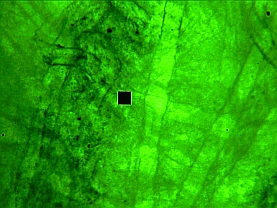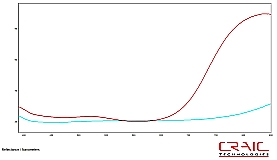Vision Research
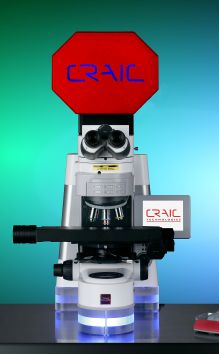
Microspectrophotometers are used for vision research and the study of photoreceptors
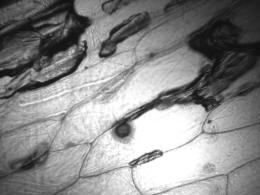
Microspectrometers are able to measure the optical effects of light on photoreceptors
Vision research uses microspectrophotometers to study photoreceptors on the micron scale.
Vision Research is a broad field of science that deals with understanding vision in every aspect from the optics to the neuroscience. One aspect of vision research is to understand the chemistry that occurs during the process of vision. This necessitates studying photoreceptors and visual pigments of all types of animals under different lighting conditions. Since many of the material that is studied is extremely small, specialized microspectrophotometers have been built to analyze them.
Light with a high enough energy (above a certain wavelength) is absorbed by a photosensitive pigment inside the photoreceptor cell, such as rhodopsin, which causes retinal to change shape. This results in a series of changes on the molecular scale which results in the stimulation of neurons and eventually vision. The microspectrophotometers that are used for vision research are specially designed so that molecules like rhodopsin or retinal are not stimulated before any measurements are made.
To learn more about microspectroscopy and vision research, select one of the following links:What is a Microspectrophotometer?
Science of Microspectrophotometers
Contamination Analysis
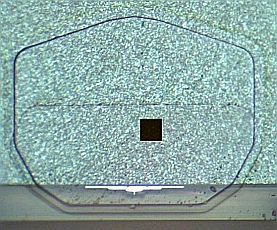
Microspectrophotometers are used to detect contaminants on precision devices.
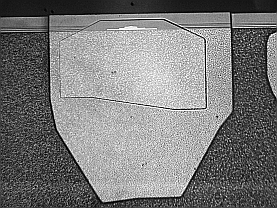
UV microscope image of a contaminated hard disk read-write head.
Contamination analysis uses UV-visible-NIR microscopes, microspectrophotometers and Raman microspectrometers to locate and identify contaminants.
Contamination Analysis is a difficult problem for any failure analysis laboratory. It is especially challenging if the contamination has occurred in a supposedly clean environment. If the contaminated device is a precision device, such as an integrated circuit or a hard disk drive, the contaminants may also be microscopic in scale. Certainly, the critical dimensions of the device are microscopic. And as many contaminants are invisible to the human eye due to their chemical composition, more sensitive analysis tools are required.
Due to the fact that many of the contaminants are UV active and the components themselves are microscopic, ultraviolet microscopes, microspectrophotometers and Raman microspectrometers such as those made by CRAIC are irreplaceable. These units are not only used to locate contaminants but are used to determine their source by both microscopy and microspectroscopy. Microspectrophotometers also have additional capabilities to measure thin film thickness and even absolute reflectivity.
To learn more about microspectroscopy and contaminant analysis, select one of the following links:
Science of Microspectrophotometers
Questioned Document Examination
Microspectrophotometers are used for non-destructive examination of inks and papers.
Questioned document examination is the field that relates to the forensic examination of documents, inks and papers. One of the most common tasks of the questioned document examiner is to determine if a suspect document is an original. Often tests are done by comparison with other original samples or by comparison with standard reference materials. Questioned document examiners work with samples that range from historical treatises to currency to identification papers such as passports.
Many types of tests can be performed by the questioned document examiner. These range from simple imaging to advanced spectroscopic analysis. Due to the microscopic nature of many of the unique features in documents, microprinting being just one example, microspectrophotometers such as the 20/30 PV™ and the CRAIC Apollo™ Raman are utilized. These systems are able to provide images and spectra of microscopic features of questioned documents by UV-visible-NIR reflectance, transmission, fluorescence and Raman excitation. The visible part of the spectrum is important as it helps distinguish between different colored inks, papers and security features. The UV is important as many of the chemicals used in inks and papers have a UV active component. Additionally, many security features are only detectable in the ultraviolet region. The NIR region is important as some of the newer security features have spectral responses here.
To learn more about microspectroscopy and applications such as questioned document examination, select one of the following links:
What is a Microspectrophotometer?
Science of Microspectrophotometers
Ink and Paper of Questioned Documents
20/30 PV™ Microspectrophotometers
UVM-1™ UV-Visible-NIR Microscope
CRAIC Apollo™ Raman Microspectrometer
Biomaterials Research
Microspectrophotometers are used to analyze biomaterials by imaging and spectroscopy.
Nanotechnology is the control of matter on the atomic or molecular scale. It has many different applications including research of biomaterials. Biomaterials are naturally occuring materials or those derived from biological processes. They have unique properties arising from features that occur on the micro or nano-scale. Examples include silicates in algae and proteins.
Due to the microscopic scales of the materials to be analyzed, microspectrophotometers are the perfect tool. Able to analyze micro-scale samples by absorption, reflectance or even fluorescence, these tools are easy-to-use and very accurate. Their flexibility and accuracy make them very important for analyzing everything from the optical effects of butterfly wings to protein crystals.
To learn more about microspectroscopy and biomaterial research applications, select one of the following links:
What is a Microspectrophotometer?
Science of Microspectrophotometers
Nanomaterial Research Instrumentation
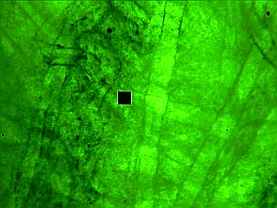
Microspectrophotometers are used to analyze nanomaterials by reflectance, absorbance and fluorescence
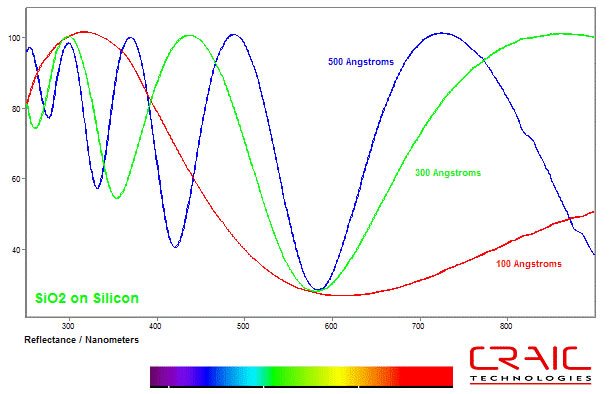
Film thickness measurements of nanomaterials
Nanotechnology is the control of matter on the atomic or molecular scale. It has many different applications including research and development of nanomaterials. Nanomaterials have unique properties some of which are determined by instrinsic nanoscale features. Some examples include the development of sensors based on the surface plasmon resonance effect, quantum dots and carbon nanotubes.
Due to the microscopic scales of the materials to be analyzed, microspectrophotometers are the perfect tool. Able to analyze micro-scale samples by absorption, reflectance or even fluorescence, these tools are easy-to-use and very accurate. Their flexibility and accuracy make them very importance for analyzing everything from the optical effects of butterfly wings to surface plasmon resonance based sensors.
To learn more about microspectroscopy and nanomaterial applications, select one of the following links:
What is a Microspectrophotometer?
Science of Microspectrophotometers


